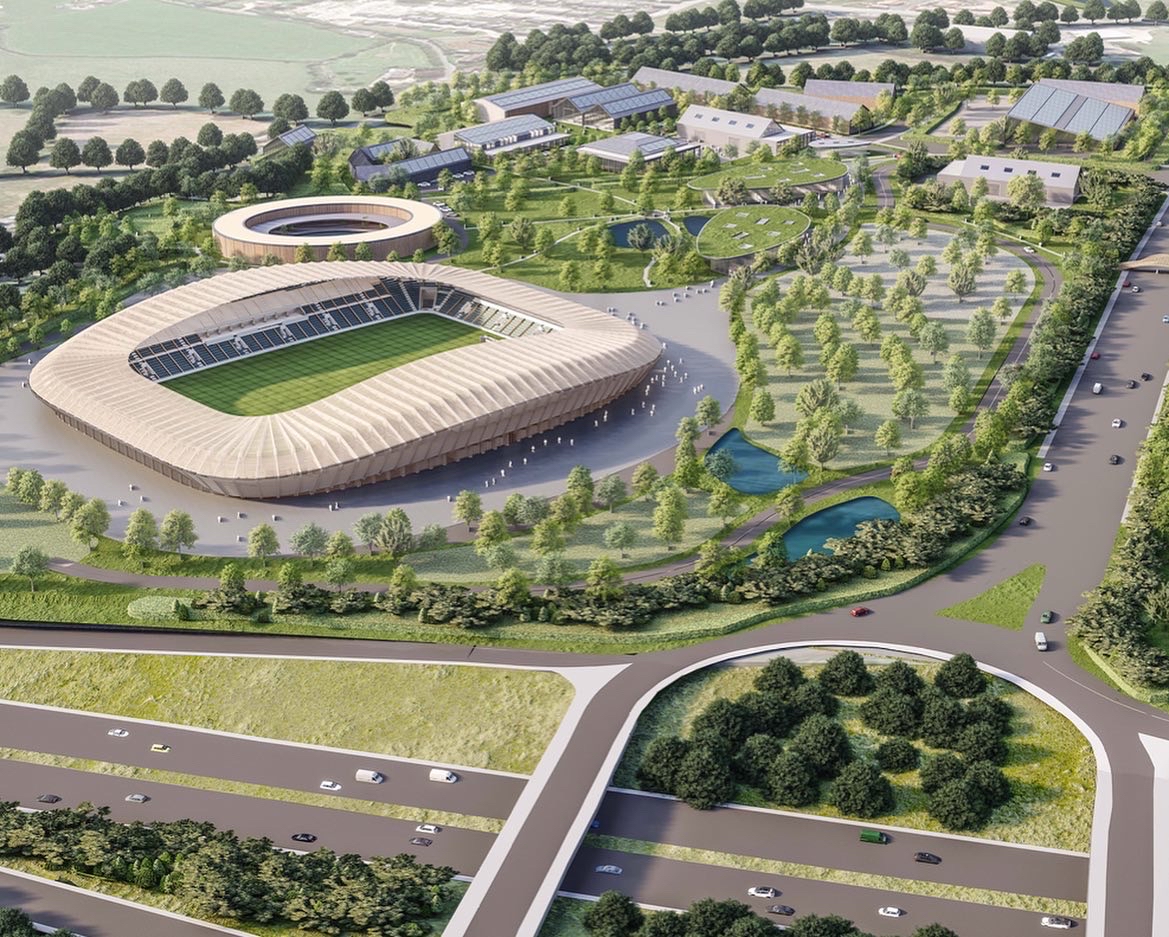Who’s doing it?
Forest Green Rovers, the ‘world’s greenest football club’ and leaders of England’s League Two, has unveiled the latest stage of its sustainability-driven vision.
What are they doing?
Working with Ecotricity, its groundbreaking ‘Eco Park’ development will house the club’s new home, next to the M5 motorway in Gloucestershire.
The latest plan, submitted this month, is the result of collaboration between Forest Green, district council and local enterprise.
If approved, work will begin on initial facilities this spring.
Key parts of Eco Park
Powered by renewable energy, Forest Green’s ‘Eco Park’ vision has a number of core elements:
- Innovative, all wooden & low carbon 5,000 seater stadium (approved already).
- Training complex, bringing youth, academy, women’s and first team together.
- Greentech business park, hosting companies in the zero carbon economy.
- Nature reserve with trees, wetland, hedgerows and canal.
- Hotel, shared car park and sheltered housing.
Why is this important?
Dale Vince, club chairman and renewable energy entrepreneur, points to the value of the club’s vision.:
“With Eco Park we’ll be able to properly push the boundaries of sustainable development. The beating green heart of this project will be the lowest carbon football stadium in the world ever.”
Underlined by the creation of 5,000 jobs and £150 million per year for the local economy, Eco Park shows how sports based capital development can drive the triple win of social, economic and environmental value.
Want to know more?
To join those learning how to create a sustainable future for their club or sport, you can also get in touch with us at info@impact3zero.com.

